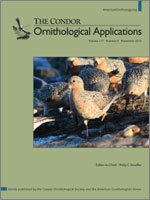Estimated probability of daily nest survival is commonly used to derive cumulative nest survival for a specified nest-exposure period. For many species of birds, the presence of a parent is an important cue used by researchers to locate nests, but in some cases nest detection rates are reduced during egg laying, when parents spend a greater amount of time away from the nest. As a result, sample size becomes limited during the laying stage. Researchers must then choose between 2 alternative strategies for deriving cumulative nest survival, based on either (1) exposure length for only the incubation period or (2) exposure length for laying plus incubation. Both approaches carry implicit assumptions, the violation of which can result in bias. We reviewed recent literature and describe the extent to which these 2 strategies were used in studies of galliform birds (including grouse, quail, and Wild Turkey [Meleagris gallopavo]) in North America. We then evaluated the theoretical potential for bias under each approach across a range of daily nest survival probabilities and for 3 different life-history scenarios. The incubation-only strategy was most commonly applied, with 62% of publications reporting its use. We found that the incubation-only strategy was biased except under an assumption of zero nest failure during egg laying. Fewer studies reported using the laying-plus-incubation strategy, which was unbiased in situations where risk of failure was equivalent among laying and incubation stages. This strategy also minimized bias across the broadest range of situations, and accordingly we recommend its use where the daily survival rate during egg laying is unknown. We recommend that both the laying and incubation periods should be used to define the length of nest exposure when estimating cumulative nest survival, particularly for species with large clutches and long laying periods.
How to translate text using browser tools
30 September 2015
Biases in nest survival associated with choice of exposure period: A case study in North American upland game birds
Erik J. Blomberg,
Daniel Gibson,
James S. Sedinger
ACCESS THE FULL ARTICLE

The Condor
Vol. 117 • No. 4
November 2015
Vol. 117 • No. 4
November 2015
bobwhite
daily nest survival
Galliformes
grouse
nest success
prairie-chicken
ptarmigan




